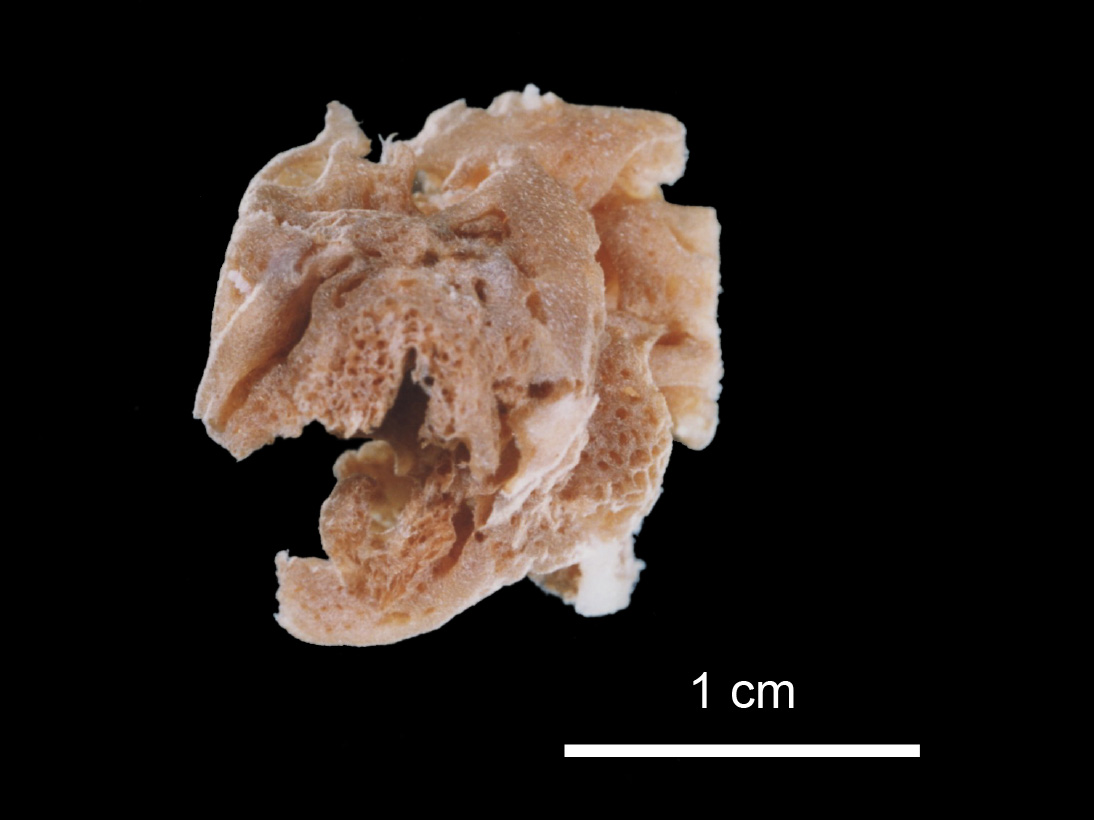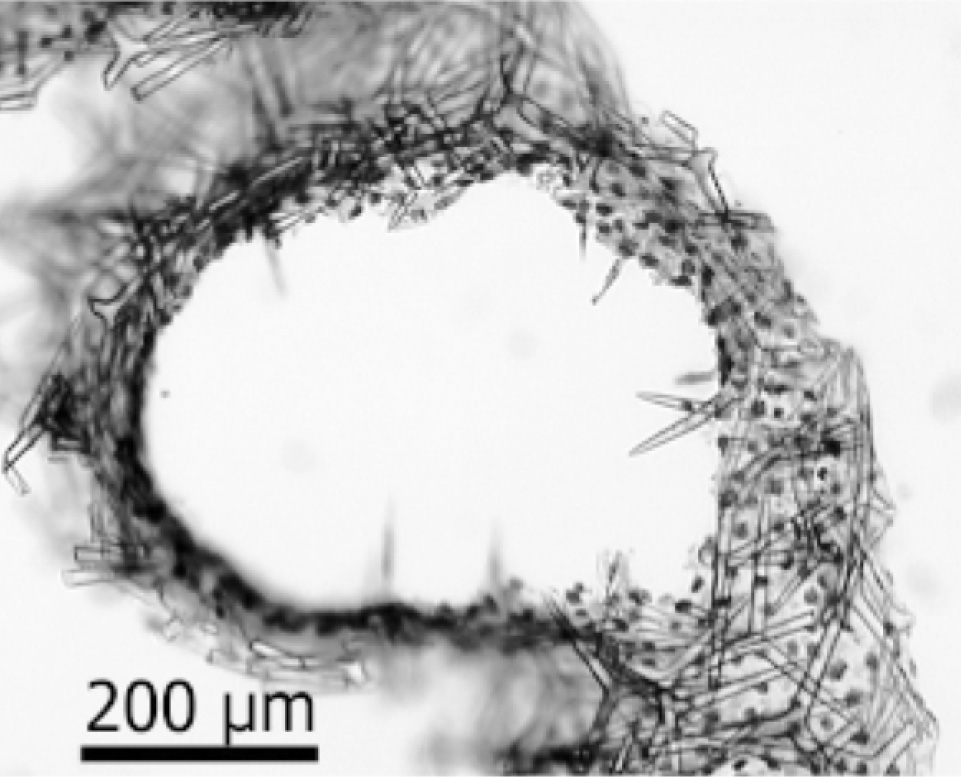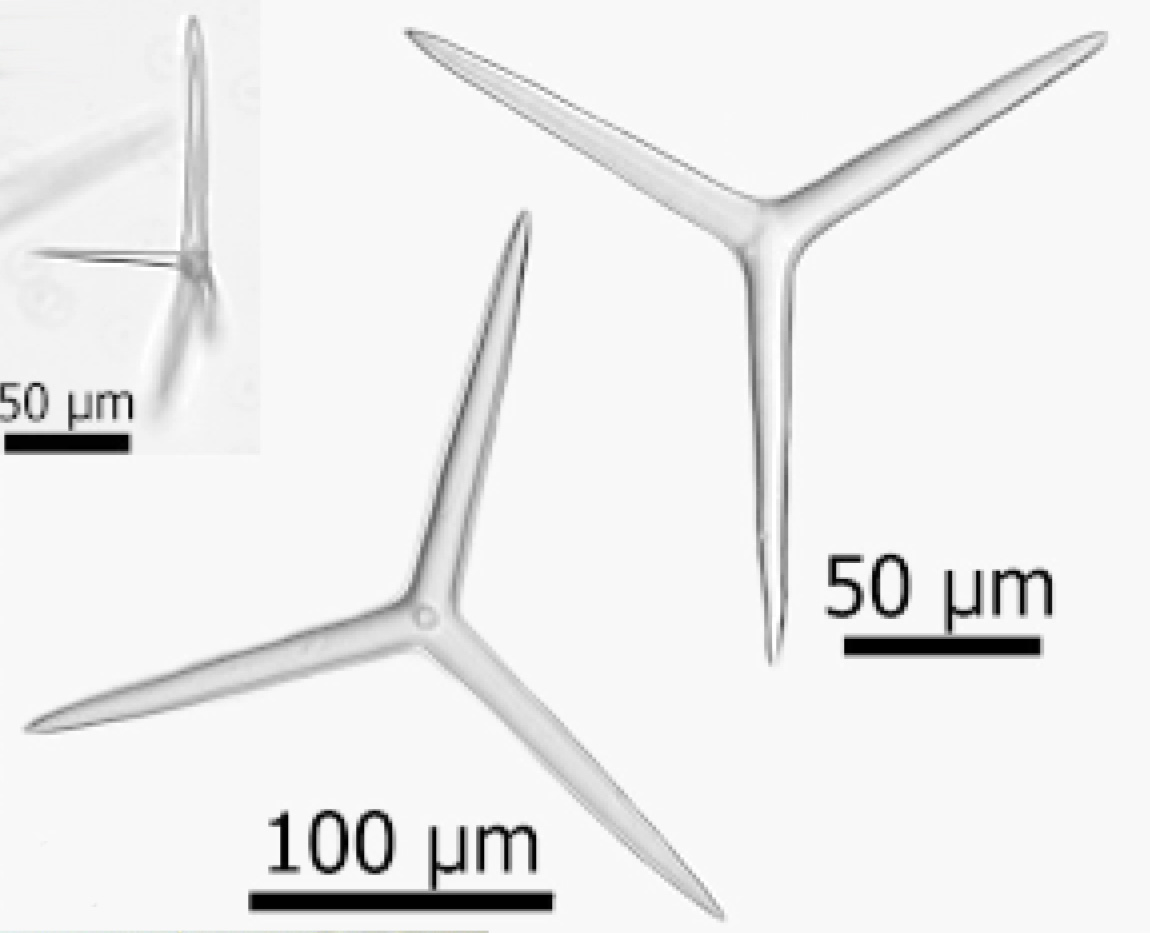Morphological description (show/hide)
| Dense mass of anastomosing tubes with small tubes (0.5mm diameter). Tubes fused together to form fewer, larger (excurrent) tubes (2-3mm diameter), which end in a terminal osculum. The cormus measures 2x2cm | | white | | dark brown | | Few, on top of larger excurrent tubes | | Relatively firm, harsh. | | Smooth | | Sustained by a densely packed irregular layer of tangential triactines and tangentially orientated basal plane of tetractines (same size as triactines), forming the wall of tubes. Apical free actines of the tetractines protrude free into tubes. Actines of the tetractines and the basal plane of tetractines are mostly arranged without any order. Actines overlap so that few (no more than five) are stacked above each other. The tube walls have a thickness of up to 40um. Tetractines are concentrated mostly in the walls of the larger (excurrent) tubes, with fewer present in the walls of smaller tubes. | | Not differentiated. | | The major part of the skeleton consists of regular triactines with more-or-less cylindrical actines, with a size of 90-(108.13)-142x12-(14.3)-20um. The distal part of their actines is sometimes slightly undulated. A few tetractines are present, more abundant in the walls of the larger tubes. These tetractincs possess a basal system of the same size as the triactines, with their reduced (thinner and shorter) free apical actine protruding into water canals. Neither triactincs nor tetractincs are arranged in any apparent order in any part of the skeleton. |
|





